



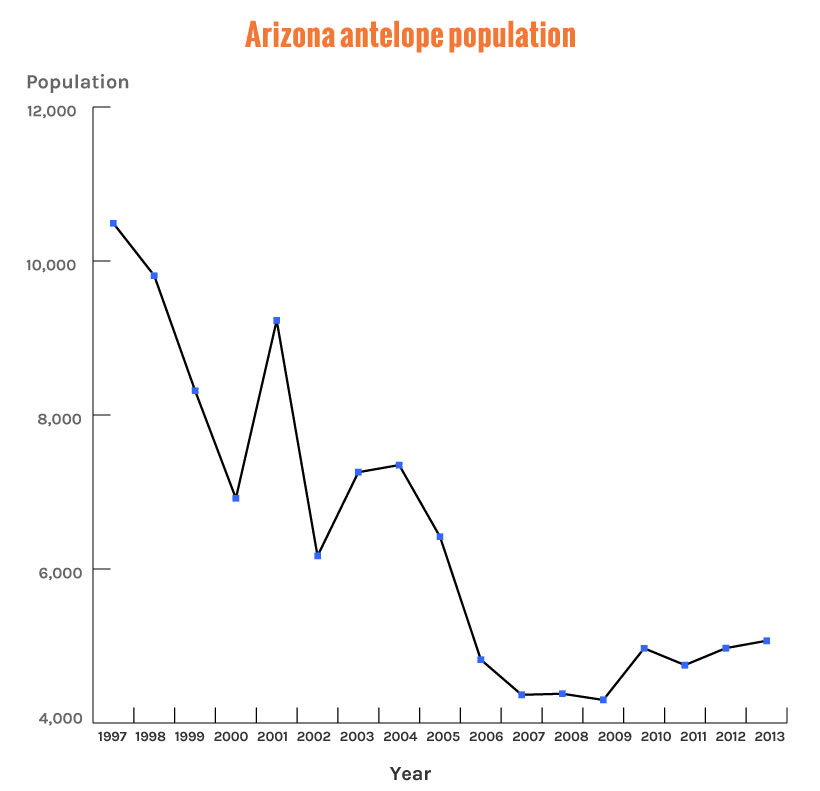

Photo credit: Getty Images
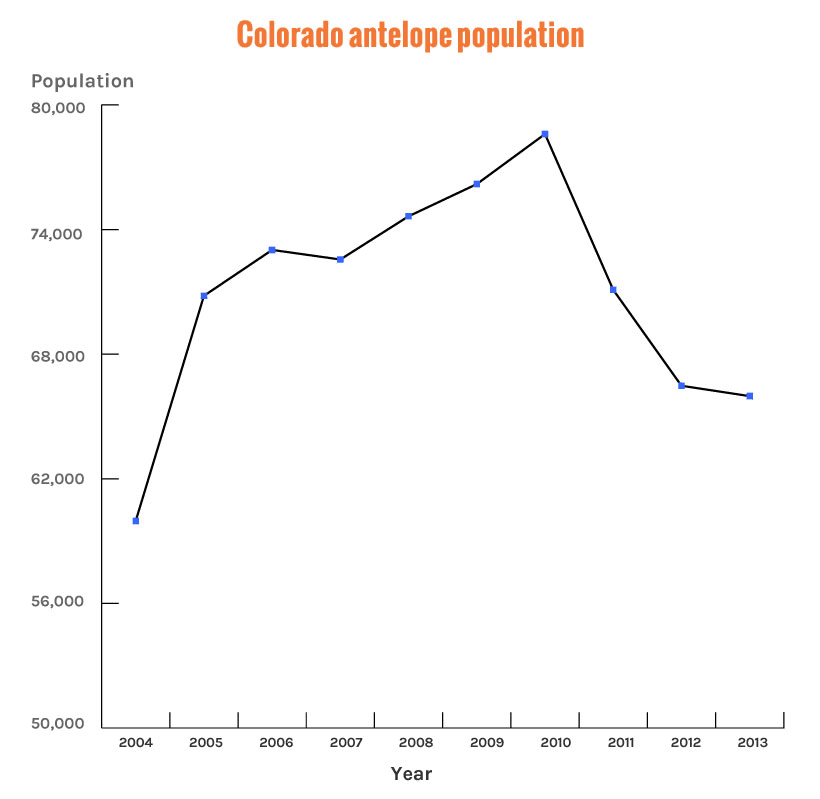
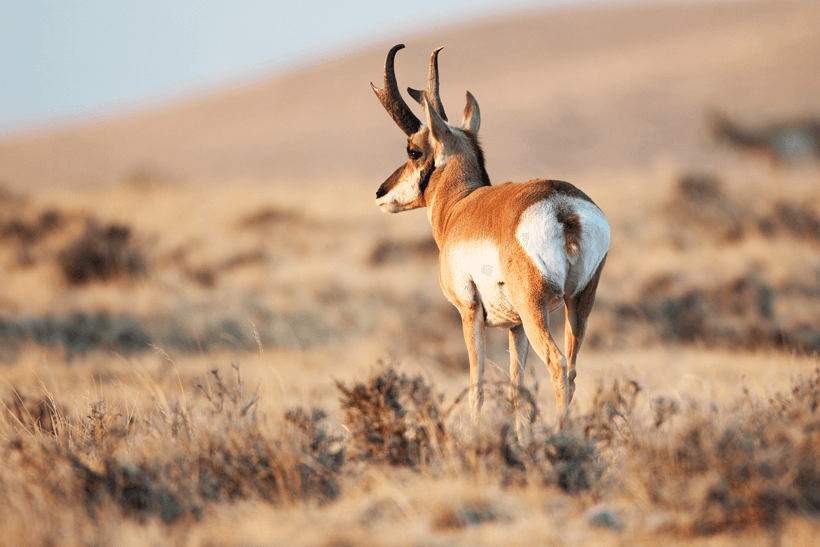
Photo credit: Getty Images
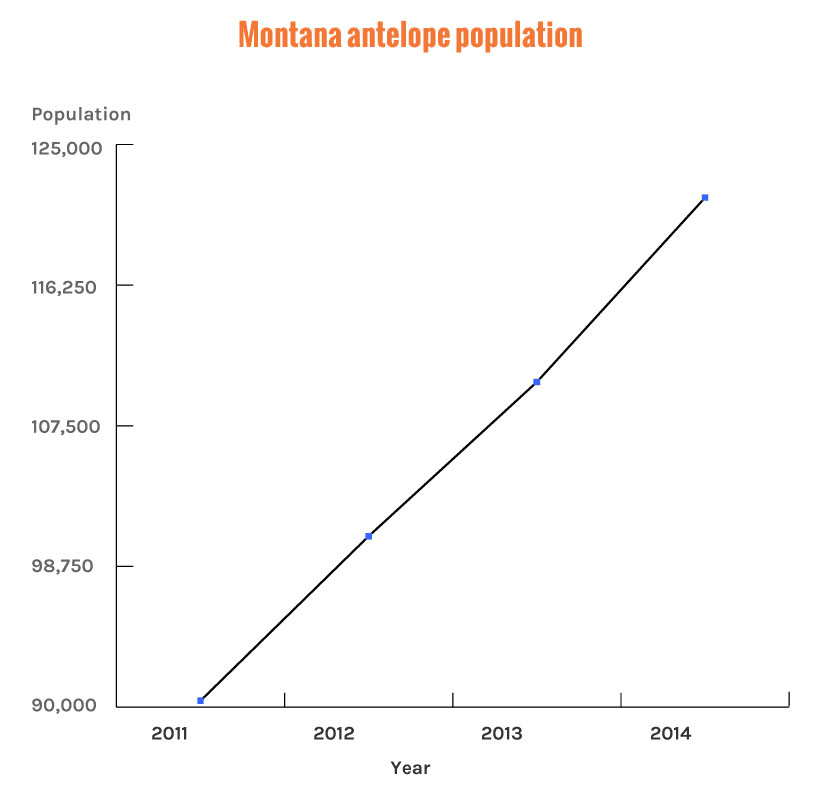
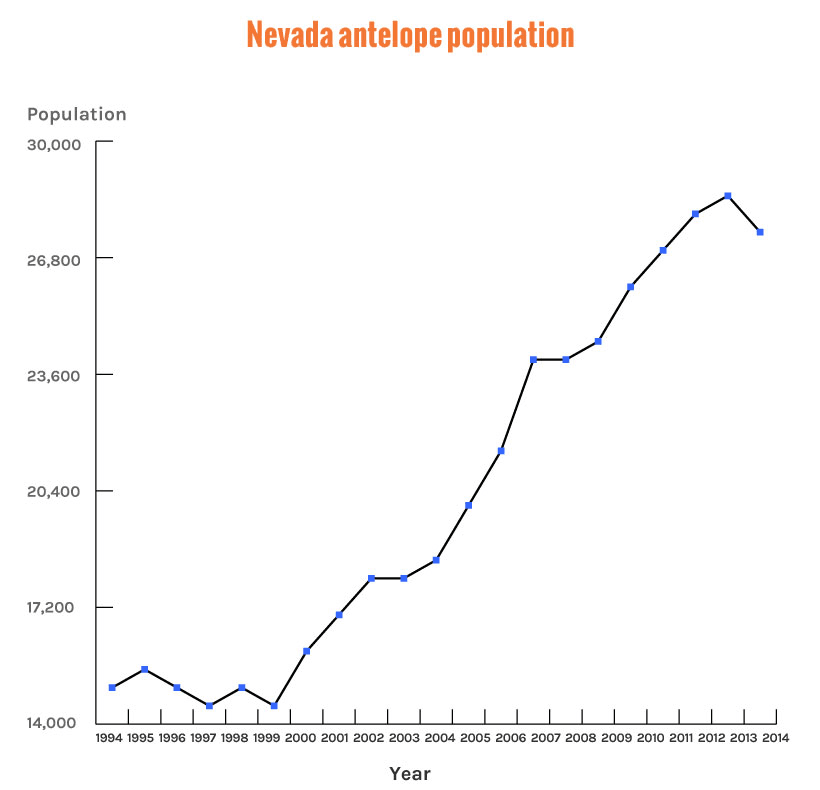
Region | NE |
|---|---|
Bucks: 100 does | 38 |
Fawns: 100 does | 34 |
Region | NW |
Bucks: 100 does | 32 |
Fawns: 100 does | 33 |
Region | Bucks: 100 does | Fawns: 100 does |
|---|---|---|
NE | 38 | 34 |
NW | 32 | 33 |
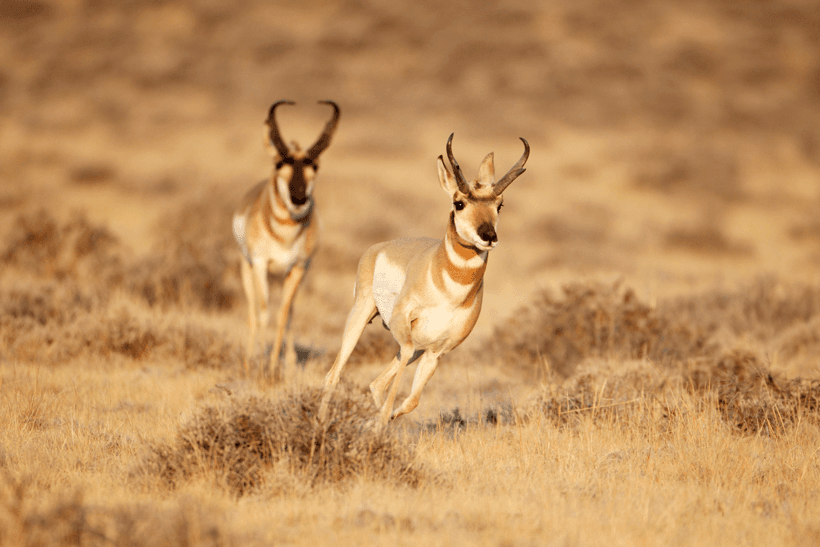
Photo credit: Getty Images
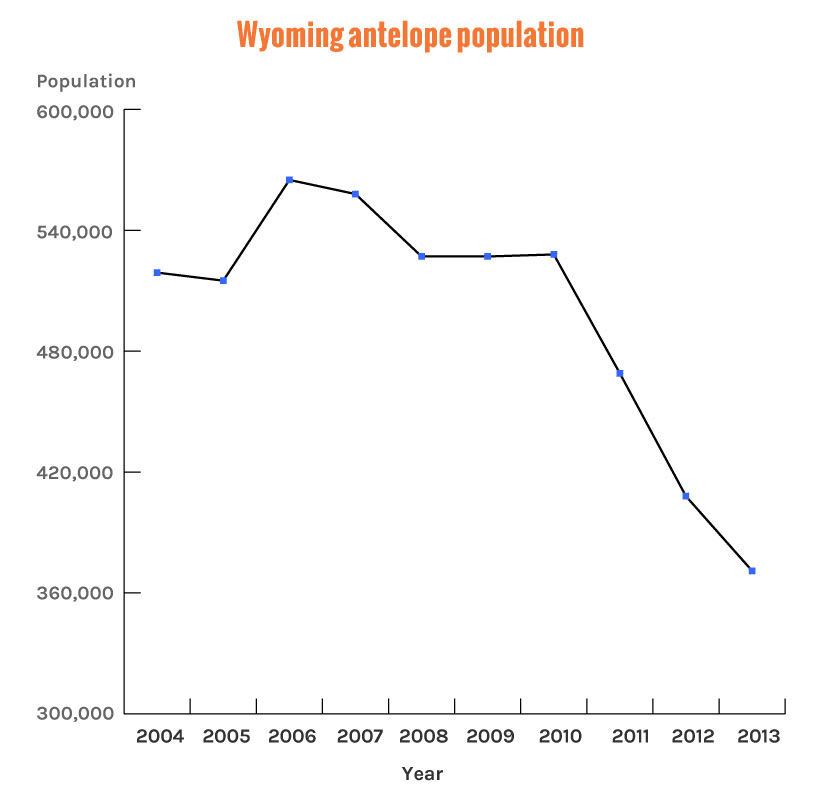
PREDATION |
|
|---|---|
The role of predation in limiting antelope recruitment is dependent upon a number of factors. In circumstances where there is diminished habitat quality and marginal water availability, predator control can be used to actually increase fawn survival. Antelope predators include coyotes, cougars, wolves, bobcats, as well as black bears and golden eagles. |
|
PREDATION | LIVESTOCKLOSS |
The role of predation in limiting antelope recruitment is dependent upon a number of factors. In circumstances where there is diminished habitat quality and marginal water availability, predator control can be used to actually increase fawn survival. Antelope predators include coyotes, cougars, wolves, bobcats, as well as black bears and golden eagles. | Cattle, sheep and horses are the primary domestic livestock species sharing rangelands with antelope and about 99% of antelope roam rangelands with livestock at some time during the year. Although these animals have historically coexisted with antelope, growing competition for a limited quantity of land reduces the availability of forbs and grasses that are a critical factor in antelope fawn survival. |
PREDATION |
|
The role of predation in limiting antelope recruitment is dependent upon a number of factors. In circumstances where there is diminished habitat quality and marginal water availability, predator control can be used to actually increase fawn survival. Antelope predators include coyotes, cougars, wolves, bobcats, as well as black bears and golden eagles. |
|
PREDATION | HABITATLOSS |
The role of predation in limiting antelope recruitment is dependent upon a number of factors. In circumstances where there is diminished habitat quality and marginal water availability, predator control can be used to actually increase fawn survival. Antelope predators include coyotes, cougars, wolves, bobcats, as well as black bears and golden eagles. | A critical limiting factor in antelope habitat is the lack of succulent forbs and grasses on spring/summer ranges. This is the result of xeric, low annual precipitation conditions, combined with persistent early spring grazing practices. |
PREDATION |
|
The role of predation in limiting antelope recruitment is dependent upon a number of factors. In circumstances where there is diminished habitat quality and marginal water availability, predator control can be used to actually increase fawn survival. Antelope predators include coyotes, cougars, wolves, bobcats, as well as black bears and golden eagles. |
|
PREDATION | DISEASE |
The role of predation in limiting antelope recruitment is dependent upon a number of factors. In circumstances where there is diminished habitat quality and marginal water availability, predator control can be used to actually increase fawn survival. Antelope predators include coyotes, cougars, wolves, bobcats, as well as black bears and golden eagles. | The most common diseases that affect antelope are bluetongue and epizootic hemorrhagic disease (EHD). The most important vectors for bluetongue and EHD are no-see-um gnats and die-offs can be expected to terminate shortly after temperatures drop below freezing. Bluetongue caused the loss of 3,200 antelope in eastern Wyoming during 1976 and an additional 300 in 1984. Die-offs due to EHD are not well documented, largely due to the difficulty in distinguishing it from bluetongue, but significant losses have been suspected in a number of Western states and Canadian provinces. |
PREDATION |
|
The role of predation in limiting antelope recruitment is dependent upon a number of factors. In circumstances where there is diminished habitat quality and marginal water availability, predator control can be used to actually increase fawn survival. Antelope predators include coyotes, cougars, wolves, bobcats, as well as black bears and golden eagles. |
|
PREDATION | FENCES, HIGHWAYS, RAILROADS |
The role of predation in limiting antelope recruitment is dependent upon a number of factors. In circumstances where there is diminished habitat quality and marginal water availability, predator control can be used to actually increase fawn survival. Antelope predators include coyotes, cougars, wolves, bobcats, as well as black bears and golden eagles. | Highways, railroads and fences that are not wildlife-friendly pose a threat to antelope population. Antelope prefer to crawl beneath fences and some are set too close to the ground. Each of these factors prevents herds from migrating freely, which can lead to inbreeding, poor health and more stress on the antelope. |
PREDATION |
|
The role of predation in limiting antelope recruitment is dependent upon a number of factors. In circumstances where there is diminished habitat quality and marginal water availability, predator control can be used to actually increase fawn survival. Antelope predators include coyotes, cougars, wolves, bobcats, as well as black bears and golden eagles. |
|
PREDATION | ENERGY DEVELOPMENT |
The role of predation in limiting antelope recruitment is dependent upon a number of factors. In circumstances where there is diminished habitat quality and marginal water availability, predator control can be used to actually increase fawn survival. Antelope predators include coyotes, cougars, wolves, bobcats, as well as black bears and golden eagles. | Increasing energy development has been shown to pose a serious threat to antelope populations. Based upon research, biologists from the U.S., Mexico and Canada concluded that habitat fragmentation and loss from industrial infrastructure development is one of the most pressing threats to antelope. Petroleum and natural gas extraction, wind and solar power developments and the pipelines transmission lines and roads needed to transport the resource and access to the sites have deeply impacted antelope resources. |
PREDATION | The role of predation in limiting antelope recruitment is dependent upon a number of factors. In circumstances where there is diminished habitat quality and marginal water availability, predator control can be used to actually increase fawn survival. Antelope predators include coyotes, cougars, wolves, bobcats, as well as black bears and golden eagles. |
|---|---|
|
|
LIVESTOCKLOSS | Cattle, sheep and horses are the primary domestic livestock species sharing rangelands with antelope and about 99% of antelope roam rangelands with livestock at some time during the year. Although these animals have historically coexisted with antelope, growing competition for a limited quantity of land reduces the availability of forbs and grasses that are a critical factor in antelope fawn survival. |
|
|
HABITATLOSS | A critical limiting factor in antelope habitat is the lack of succulent forbs and grasses on spring/summer ranges. This is the result of xeric, low annual precipitation conditions, combined with persistent early spring grazing practices. |
|
|
DISEASE | The most common diseases that affect antelope are bluetongue and epizootic hemorrhagic disease (EHD). The most important vectors for bluetongue and EHD are no-see-um gnats and die-offs can be expected to terminate shortly after temperatures drop below freezing. Bluetongue caused the loss of 3,200 antelope in eastern Wyoming during 1976 and an additional 300 in 1984. Die-offs due to EHD are not well documented, largely due to the difficulty in distinguishing it from bluetongue, but significant losses have been suspected in a number of Western states and Canadian provinces. |
|
|
FENCES, HIGHWAYS, RAILROADS | Highways, railroads and fences that are not wildlife-friendly pose a threat to antelope population. Antelope prefer to crawl beneath fences and some are set too close to the ground. Each of these factors prevents herds from migrating freely, which can lead to inbreeding, poor health and more stress on the antelope. |
|
|
ENERGY DEVELOPMENT | Increasing energy development has been shown to pose a serious threat to antelope populations. Based upon research, biologists from the U.S., Mexico and Canada concluded that habitat fragmentation and loss from industrial infrastructure development is one of the most pressing threats to antelope. Petroleum and natural gas extraction, wind and solar power developments and the pipelines transmission lines and roads needed to transport the resource and access to the sites have deeply impacted antelope resources. |
The antelope is one of the greatest wildlife restoration success stories. In the early 1800s, antelope numbered between 30 and 60 million, ranging from as far north as Canada to as far south as Mexico City. By the turn of the century, however, European settlers had nearly hunted them to extinction, bringing the antelope population to a low of approximately 13,000. At this point, a number of state legislatures began instituting laws that made it unlawful to kill, ensnare or trap antelope and for nearly 50 years, the species was given complete protection. State authorities also initiated trapping and transplanting programs, further helping to reestablish antelope populations. By the 20th century, antelope populations increased to nearly one million animals. Today, antelope have a scattered but widespread distribution throughout western North America and, while the overall population has undoubtedly recovered, some regions are faring better than others.
Throughout the 1960s, there were only about 15,000 antelope left in the state of Colorado. Thanks to concerted conservation efforts, that number rose to 30,000 in the ‘70s and in 2008, Colorado’s antelope population was estimated at more than 70,000. During 2010, antelope peaked to roughly 79,000 but then saw a slight decline to 71,000 the following year. As of 2013, Colorado’s estimated statewide post-hunt population is near 66,000. According to Colorado Parks and Wildlife Big Game Manager, Andy Holland, “the population reduction is attributable to increased doe harvest, List B licenses, and late seasons designed to achieve population objectives in the Southeast Region. Additionally, drought conditions have negatively impacted populations by reducing fawn production and recruitment.”
The severe winter of 2010-11 took a significant toll on antelope populations in northeastern Montana. Yet what is more concerning according to state biologists, is the increasing difficulty antelope face in making their seasonal migrations. Urban development, fencing, new roads, pipelines, oil and gas wells are expanding throughout many parts of the northern Great Plains. This growth has pushed its way into established wintering habitat and summer grounds where antelope rear their fawns. It has also fragmented portions of prairie habitat into isolated pieces. Biologists maintain that it will take five to 10 years before populations in northeastern Montana to recover.
Antelope populations across much of New Mexico have been in decline over the past three decades. Poor fawn survival has plagued antelope populations in recent years and is suspected to be the primary driver of population declines. According to New Mexico Department of Fish and Game’s deer and pronghorn biologist, Ryan Darr, the “loss of suitable grassland habitats exacerbated by drought has potentially made antelope fawns more susceptible to predation leading to low fawn survival.” Each year, the Department collects composition data to determine buck:doe ratios and fawn:doe ratios across select game management units. Five-year regional averages are displayed below.
Darr notes that the “most robust and stable populations in the state remain in the Northeast Area and on the Plains of San Augustin (around GMU 16E). These locations host an abundance of healthy grasslands as required for pronghorn survival and population growth. Moderate populations are found in portions of the Southeast Area. Antelope are more isolated and in lower numbers in the Northwest and Southwest Areas. Despite overall population trends for the state, many areas of New Mexico continue to provide hunters with the opportunity to take an antelope. Quality bucks can also be found throughout the state, but most trophies come from the northeastern quarter of the state and the Plains of San Augustin — including the new B&C World Record taken in 2013.”
Wyoming’s antelope populations have been declining rapidly over the past decade. Just several years ago in 2010, there were more than 500,000 antelope in the state. Today, that number has dropped to slightly more than 400,000. According to Senior Wildlife Biologist Grant Frost much of this can be attributed to poor habitat conditions that did not allow antelope to sustain numbers or rebound from population declines as quickly as they used to. The drought over the past several years has also posed additional challenges, but the state has seen above average precipitation since then and in 2014, there was much better fawn survival.